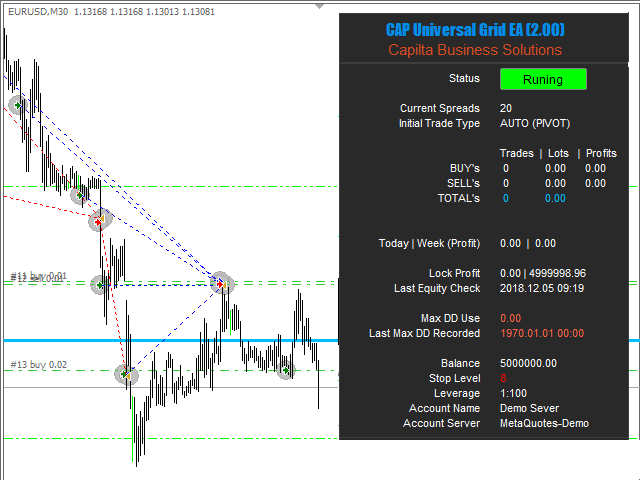Grid trading is an extremely effective and mechanical trading approach that has no dependence on direction, profits from volatility and uses the
inherent wavy nature of the industry. [
setup
Guide | Update
Guide | Submit
your Problem | FAQ | All
Products ]
- easy to set up and supervise
- No indicators or hard analysis needed
- Grid trading is time-frame independent
- Requires small forecasting of the market
- Extracts money out of the market regularly
- Easy to set up and supervise.
- function and inputs – the EA includes lots of inputs and functions, so you can easily maximize your trading strategy.
- The EA can manage manual trade – the EA can place a grid for your manual trades or you can set the EA to manage trades opened
by another EA. - Built-in automatic trading strategy – the EA can manage your manual trades but you can also set it to fully automatic mode.
The EA comes with more than 16 automatic trading strategies for opening the initial trade. - Buy and Sell Grid – The EA can manage buy and sell grids simultaneously.
- Customization capabilities for future. A unique customization code will be assigned that will perform the relevant
customization functions once the code is entered. Options will be controlled by an external file. - No pending orders are placed – only market orders.
- It works for Forex, CFDs and futures
[spoiler title=”Read More…”]
- It can appear complex and illogical initially.
- Like most powerful tools, it is also dangerous.
- Poorly managed grids can cause big drawdowns.
- It requires more patience than regular trading.
- It may require traders to make a paradigm shift.
Grid trading has become very popular amongst traders because it does not use stops, is highly mechanical, has no reliance on direction, uses
the intrinsic wavy nature of the market, does not require indicators or charts to trade and can be easily automated. Grid trading refers to
the trading approach which uses fixed price levels to enter and exit trades. A grid is nothing more than a single deal or position segmented
into several trades, which are cashed-out independently from each other at regular intervals.
For a full description of each input parameter, please read the user
guide.
Mohammad Ali, technical analyst and speculator, software engineer and founder of Capilta Business Solutions.
[/spoiler]





